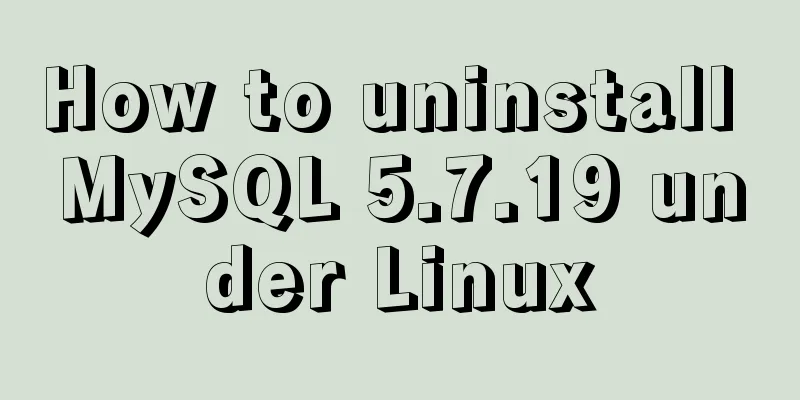Time zone issues with Django deployed in Docker container

|
Now container deployment is very mature. Many of our services will use container deployment, and update and recovery are very convenient. However, there is a more troublesome problem, which is time zone processing. Usually, it is solved by injecting TZ environment variables, but this processing method does not work in Django. Time zone configuration in DjangoIn Django's configuration file settings.py, there are two configuration parameters related to time and time zone, namely TIME_ZONE and USE_TZ. We expect that after configuring in settings.py, Django will be able to correctly obtain the local time, but in fact it is contrary to our expectations. Let's see what these two settings do. USE_TZ=TrueIf USE_TZ is set to True, Django will use the system default time zone. At this time, the TIME_ZONE setting is basically invalid, that is, it has no effect regardless of whether it is set or not. USE_TZ=FalseIf USE_TZ is set to False
If you are using Windows, the TIME_ZONE setting is useless and Django will use the local time. If you are using other systems, it will use the UTC time in that time zone. For example, if you set USE_TZ = False, TIME_ZONE = 'Asia/Shanghai', the UTC time of Shanghai will be used. At this point, you may think that the time is good, but in fact it is not. We also need to pay attention to the system time zone settings. Setting the time zone in Linux containersMy local time is now: 16:15, and the settings in Django are: USE_TZ = False, TIME_ZONE = 'Asia/Shanghai' Do not inject TZ=Asia/Shanghai environment variable to enter the container to view the container time and time zone
The system time is displayed in the UTC time zone, the time is: 08:15, exactly 8 hours difference Enter the Django environment to view the time and time zonepython manage.py shell from datetime import datetime datetime.now() # Output datetime.datetime(2021, 10, 8, 8, 24, 8, 289230) from django.utils import timezone timezone.get_current_timezone_name() # Output 'Asia/Shanghai' Inject environment variable TZ=Asia/Shanghai
The system time is displayed in the Asia time zone, but the time is still UTC time, not the real local time. Enter the Django environment to view the time and time zone python manage.py shell from datetime import datetime datetime.now() # Output datetime.datetime(2021, 10, 8, 8, 24, 8, 289230) from django.utils import timezone timezone.get_current_timezone_name() # Output 'Asia/Shanghai' As you can see, although the time zone has changed, the time is still UTC time, both in the container itself and in Django By searching online, we know that to change the Linux system time zone, we need to modify the /etc/localtime file. Modify the Linux container time zoneThe usual practice is to copy the host's /etc/localtime file to the container's /etc/localtime file. However, we found through query that the /etc/localtime file is actually just a soft link. The actual file is: /usr/share/zoneinfo/Asia/Shanghai docker cp /usr/share/zoneinfo/Asia/Shanghai test:/etc/localtime
If the TZ=Asia/Shanghai environment variable is injected, even if the /etc/localtime file is replaced, only the time zone is changed, and the time is still UTC time Enter the Django environment to view the timepython manage.py shell from datetime import datetime datetime.now() # Output datetime.datetime(2021, 10, 8, 8, 43, 43, 754698) The Linux system time is normal, but the time in the Django environment is still incorrect and is still UTC time. At this time, many people are a little crazy, and may think that there is a problem with the USE_TZ and TIME_ZONE settings in settings.py. In fact, the problem is not here. The reason is that the datetime library will look for the Asia/Shanghai file in the /usr/share/zoneinfo/ directory, but our image does not contain this directory, so Django still uses the UTC time zone. The solution is very simple: create a directory /usr/share/zoneinfo/Asia and copy the files to this directory. # In the container (if this directory does not exist) mkdir -p /usr/share/zoneinfo/Asia # Outside the container docker cp /usr/share/zoneinfo/Asia/Shanghai test:/usr/share/zoneinfo/Asia/Shanghai Then log in to the container and enter the Django environment to check the time python manage.py shell from datetime import datetime datetime.now() # Output datetime.datetime(2021, 10, 8, 16, 49, 32, 57) This time the timing was exactly right. SummarizeFor the container time zone issue, it is recommended to install and set /etc/localtime during the container creation phase. For example, add the following statement in the Dockerfile ADD /usr/share/zoneinfo/Asia/Shanghai /usr/share/zoneinfo/Asia/Shanghai RUN ln -s /usr/share/zoneinfo/Asia/Shanghai /etc/localtime In this way, we don't need to pay attention to the time zone issue when starting our container. If the container has been made, mount the time zone file when starting it docker run -d -v /etc/localtime:/etc/localtime -v /usr/share/zoneinfo/Asia/Shanghai:/usr/share/zoneinfo/Asia/Shanghai imageName This method is more troublesome. Another situation is what we are facing now. The service is already online, and we find that there is a time problem. We manually copy the two files to the container and then restart the container. docker cp /usr/share/zoneinfo/Asia/Shanghai test:/etc/localtime docker cp /usr/share/zoneinfo/Asia/Shanghai test:/usr/share/zoneinfo/Asia/Shanghai docker restart test This is the end of this article about the time zone issue of deploying Django in a Docker container. For more information about Docker deployment of Django time zone, please search for previous articles on 123WORDPRESS.COM or continue to browse the following related articles. I hope everyone will support 123WORDPRESS.COM in the future! You may also be interested in:
|
<<: CSS makes the footer automatically stick to the bottom when the content height is not enough
>>: Nodejs global variables and global objects knowledge points and usage details
Recommend
MySql inserts data successfully but reports [Err] 1055 error solution
1. Question: I have been doing insert operations ...
Detailed explanation of nodejs built-in modules
Table of contents Overview 1. Path module 2. Unti...
gbk utf8 How to choose to correctly understand and use GBK and UTF-8 web page encoding
Web page encoding is translated into English as we...
Simple summary of tomcat performance optimization methods
Tomcat itself optimization Tomcat Memory Optimiza...
Summary of common docker commands (recommended)
1. Summary: In general, they can be divided into ...
Detailed explanation of mysql filtering replication ideas
Table of contents mysql filtered replication Impl...
How to use MySQL common functions to process JSON
Official documentation: JSON Functions Name Descr...
Detailed explanation of the correct way to open em in CSS
Why do we say “usually 1em=16px”? The default tex...
HTML Tutorial: Ordered Lists
<br />Original text: http://andymao.com/andy...
In-depth explanation of the various methods and advantages and disadvantages of JavaScript inheritance
Table of contents 1. Prototype chain inheritance ...
Vue3+script setup+ts+Vite+Volar project
Table of contents Create a vue + ts project using...
How to use css variables in JS
How to use css variables in JS Use the :export ke...
Pygame code to make a snake game
Table of contents Pygame functions used Creating ...
JavaScript object-oriented implementation of magnifying glass case
This article shares the specific code of JavaScri...
HTML Tutorial: HTML horizontal line segment
<br />This tag can display a horizontal line...












